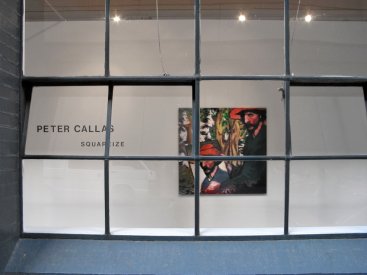Digital prints
Boutwell-Draper Gallery, Sydney (2003);
ARC one Gallery, Melbourne (2004)
The height to width ratio of the televised image from its introduction in National Socialist Germany in the 1930s till the launch of high definition television in the 1990s has been variations on the theme of 1:1.25. This ratio, wider than high, was meant to represent a kind of simulation of binocular peripheral vision, albeit severely restrained by the technical capacity of early 20th century technology. Instead, it became emblematic of a monocular kind of vision, the thing you “got” from watching too much television: just a little bit wider than square. For those of us who worked with video as a medium this ratio was, pretty much, a given, and a burden. You could try “letterboxing” (cropping the top and bottom of the frame with black) if you wanted a wider screen look. However, the resolution of television is puny and the results were often unconvincing. In the midst of what occurred in the last half century of television, we went through analogue waves to digital troughs. The basic unit of the digital image is the pixel, which is essentially square.
Just as the redoubtable engraver William Blake considered the line to be the irreducible component of visual assembly in his time, the pixel is ours. However, screens these days are getting wider and wider and the resolution of wide-screen TV (and even more so of computer screens) has rendered the pixel virtually invisible. I’m wondering whether we feel a nostalgia for these old means of production yet. Nostalgia for the visible pixel. So square!
Peter Callas from Squareize catalogue, Boutwell Draper Gallery, Sydney





